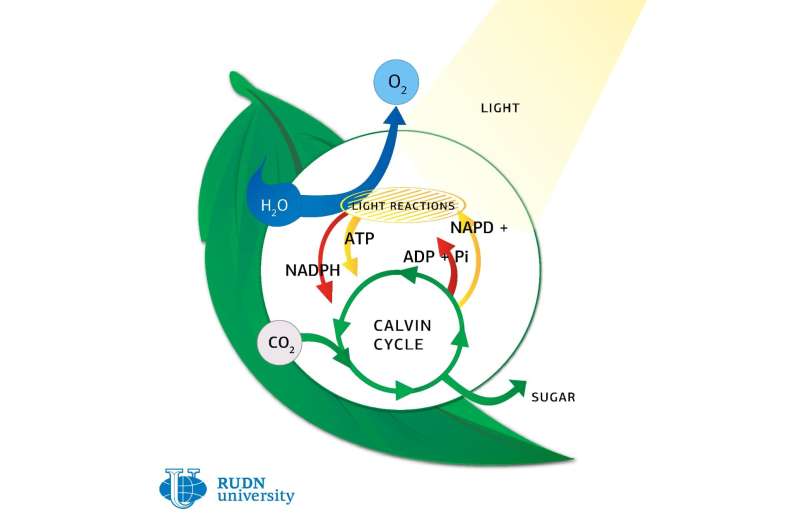Credit: RUDN University
A RUDN University biologist has developed a model for the analysis of photosynthesis in vivo. This method calculates the absorption coefficient of light by chlorophyll based on its reflectivity. Analysis of light absorption is important for assessing ecosystem productivity, which affects the state of the biosphere and the global climate. The article is published in the journal Remote Sensing of Environment.
Measurements of the efficiency of photosynthesis in living systems are necessary because they allow scientists to estimate the carbon cycle, and therefore the impact on the climate. To study photosynthesis in vivo, researchers use the vegetation absorption coefficient, a value that shows how deeply the incident radiation penetrates the canopy. It depends on biochemical, structural and external factors, so its evaluation is very difficult. Alexei Solovchenko, an employee of RUDN University, and his colleagues from the U.S. and Israel have found a new way to assess this indicator.
First, biologists calculated the ratio of absorption and transmission coefficients for individual leaves and canopy in general. Measuring these coefficients for the canopy "in sum" is difficult, but for a single leaf it is simple, so by knowing the ratio between them, scientists can calculate the absorption and transmission of canopy from the coefficients for a single leaf. Then the researchers of RUDN University obtained an equation that connects the canopy absorption coefficient to the pigments absorption coefficient—primarily that of chlorophyll—in leaves. It turned out that the canopy, unlike a single leaf, can absorb light in the infrared range, and that the absorption coefficients of pigments for plants with different densities of canopy may differ. Therefore, the biologists had to make appropriate changes to the final model.
The researchers tested this mathematical model describing the canopy absorption coefficient on crops with different types of photosynthesis—corn (C4 photosynthesis), soybeans and rice (C3 photosynthesis), measuring the spectra of absorbed and reflected solar radiation.
The model showed that in the blue spectral region, the canopy of rice reflects more than the canopy of other crops. Scientists believe it is because rice grows in water. Also, absorption curves for plants with C3-type photosynthesis (soybeans and rice) obtained with the model differed from those of plants with C4-type photosynthesis (corn), due to biochemical differences.
Thus, the model created by biologists can predict the absorption of light by different types of plants with different types of photosynthesis, different canopy architectures and different pigment content in the leaf.
More information: Anatoly Gitelson et al. Derivation of canopy light absorption coefficient from reflectance spectra, Remote Sensing of Environment (2019). DOI: 10.1016/j.rse.2019.111276
Provided by RUDN University
























